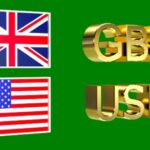Japanese Yen Struggles to Extend Gains as Risk Sentiment Improves Despite Safe-Haven Demand.
The Japanese Yen (JPY) retained a modest positive bias through the Asian trading session on Thursday, but it struggled to build on intraday gains against the US Dollar (USD), reflecting the broader influence of global risk sentiment and mixed signals from geopolitical developments. While traditional safe-haven flows lent early support to the JPY amid waning hopes for a swift resolution to the US-China trade impasse, improving investor sentiment surrounding the Federal Reserve’s independence and receding trade tensions limited the currency’s upside momentum.
Despite the encouraging backdrop for the JPY, the Japanese yen remained choppy, hovering below the 143.00 psychological mark. Market participants now find themselves navigating a landscape dominated by monetary policy divergence between the Bank of Japan (BoJ) and the Federal Reserve, evolving trade dynamics between the world’s largest economies, and ongoing geopolitical noise.
Waning US-China Trade Optimism Fuels Safe-Haven Demand
The resurgence in safe-haven appetite sparked primarily by concerns that optimism over the US-China trade relationship might be premature. Comments from US President Donald Trump and Treasury Secretary Scott Bessent delivered mixed signals on tariff policy, reigniting uncertainties over whether any meaningful progress will be achieve in the near term.
President Trump indicated that the 145% tariffs imposed on Chinese imports might eventually be reduce. However, this suggestion was quickly tempered by Bessent, who dismissed media reports that the US administration was considering unilateral tariff cuts. Instead, Bessent emphasized that Washington may be waiting for Beijing to take the first step.
This ambivalence triggered a cooling of expectations around a rapid de-escalation of the trade war, pushing investors towards the JPY, which has traditionally served as a reliable safe-haven during times of elevated global uncertainty. Notably, Japan’s Finance Minister Katsunobu Kato labeled the US tariffs as “highly disappointing” and voiced concerns about the negative effects on global markets during the recent G7 summit.
Japanese Officials Signal Proactive Engagement
Adding to the evolving narrative, Japan’s Economic Revitalization Minister Ryosei Akazawa is set to visit Washington for discussions on tariffs beginning April 30. The diplomatic outreach signals Japan’s intent to avoid direct fallout from US protectionist measures, which could have significant implications for Japan’s export-driven economy.
Simultaneously, BoJ Governor Kazuo Ueda has warned that continued US tariffs may necessitate a policy response if Japan’s economic outlook deteriorates. In light of these developments, markets are anticipating a revised economic outlook from the BoJ, with reports suggesting that the central bank could cut growth projections and highlight emerging risks from global trade friction.
BoJ’s Rate Hike Outlook in 2025 Supports Japanese yen Fundamentals
Despite concerns about potential downside risks, the broader macroeconomic environment in Japan supports the case for continued monetary tightening. Inflation has consistently hovered around or above the BoJ’s 2% target for nearly three years. As a result, investors are increasingly confident that the BoJ will pursue further rate hikes in 2025, cementing a sharp policy divergence with the US Federal Reserve.
While the BoJ remains cautious and data-dependent, even a moderate tightening bias is noteworthy in a nation that has long adhered to ultra-loose monetary policy. This subtle but meaningful shift offers underlying support to the JPY, even as short-term price action is swayed by broader risk sentiment.
Fed Expectations Remain Dovish Despite Rebound in USD
Conversely, the US Dollar continues to grapple with dovish expectations surrounding the Fed. Investors are now pricing in at least three rate cuts in 2025, with the first potentially arriving as early as June. This speculation is rooted in signs of cooling inflation, softening economic data, and concerns over the Fed’s autonomy.
While easing fears over the Fed’s independence helped lift the USD slightly over the past two sessions, the gains appear transitory, especially in the face of widening policy divergence with the BoJ. The USD has been unable to extend its recovery from multi-year lows in a meaningful way, and this lack of follow-through continues to cap upside in the USDJPY pair.
Geopolitical Tensions Add a Layer of Risk Premium
Beyond economic fundamentals, the geopolitical landscape remains volatile and adds a layer of risk premium that could favor safe-haven currencies like the JPY. Recent remarks from President Trump targeting Ukrainian President Volodymyr Zelensky have raised fresh questions about US foreign policy consistency.
Trump criticized Zelensky for rejecting proposals related to Russian control over Crimea and suggested that Ukraine’s refusal to agree to US-backed terms would only prolong the war. While the former president claimed that a resolution is “very close,” the market interpreted the statements as indicative of uncertainty in future US involvement, thereby keeping geopolitical tensions elevated.
Such developments, coupled with escalating US-China friction and possible fallout from global tariff disputes, keep demand for low-yielding but safe assets like the JPY relatively well supported.
Market Attention Turns to US Economic Data
With conflicting signals shaping market sentiment, traders now turn their attention to key US macroeconomic indicators due later in the day. The economic docket includes:
- Initial Jobless Claims
- Durable Goods Orders
- Existing Home Sales
Any surprises from these releases could impact Fed policy expectations and drive short-term volatility in the USD/JPY pair. A string of weak data could reinforce the dovish Fed narrative and potentially lead to a renewed leg lower in USD/JPY, while strong figures may prompt a brief bounce in the greenback.
Technical Perspective: Japanese yen Eyes on 143.00 Level
From a technical standpoint, the 143.00 handle continues to act as a significant resistance-turned-support area for the USDJPY pair. A sustained break below this level could expose further downside toward the 142.40–142.00 zone, especially if risk-off sentiment gains traction.
On the flip side, any positive surprise from US data or improvement in risk appetite could push USDJPY toward 144.00, although upside may remain capped unless the Fed’s rate path shifts back toward a more hawkish stance.
Conclusion: Japanese yen Outlook Hinges on Trade Policy, BoJ-Fed Divergence
In summary, while safe-haven flows and BoJ rate hike expectations provide a supportive backdrop for the JPY, risk-on sentiment and geopolitical noise continue to restrict the currency’s strength against the USD. The key drivers remain:
- Uncertainty around US-China trade dynamics
- Expectations for BoJ policy normalization in 2025
- Persistent dovish Fed outlook
- Volatile geopolitical developments
As the week progresses, traders will closely watch economic data and official commentary for further clues on the future policy trajectory of the Fed and BoJ. Until clearer direction emerges, the USDJPY pair may remain rangebound, with market psychology and headline risks continuing to dominate short-term movements.
https://voiceoftraders.com/analysis/pound-sterling-slides-as-uk-flash-pmi-contracts-in-april







